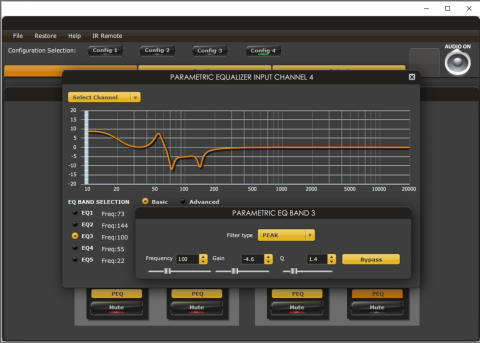DIGITAL SIGNAL PROCESSING, A QUICK TOUR
Meadowlark Audio speakers are capable of taking digital audio directly from your source. So, if
you’re thinking of moving up to next generation stereo, or if you’re buying your first serious stereo,
it’s a good idea to understand the basics.
At the beginning of digital audio, when Sony and Phillips got together to create the standards used
in Compact Disc, they established a data format called Sony/Philllips Digital Interface Format or
S/PDIF. That’s what’s on a CD. Like any datastream, it’s a string of 1s and 0s that can be stored or
transmitted like any other digital file.
When CD was being developed by Sony and Phillips, their idea was to make a 120mm optical disc
that could hold the entirety of their longest piece of music of interest, Beethoven’s 9th Symphony,
which at the time consumed two LPs, about 75 minutes. With the available data densities, that
allowed for a 16 bit word for both left and right channels coming once each 1/44100th of a second,
or 44.1KHz. At that data density, resolution and dynamic range were pretty good, but not great.
Today’s HD Audio data densities are much higher, meaning fantastic resolution and dynamic range.
Conveniently, the format remains the same so a modern system that processes at 24bit / 192KHz
will also process your CD quality files.
In our speakers, the onboard Digital Signal Processor inputs S/PDIF, AES/EBU and Toslink, then goes
to work on the datastream, rearranging it in a number of ways to accomplish all of the things that
were once done by analog circuits, plus much more. This process is lossless, meaning the data are
not degraded, merely rearranged. So unlike conventional methods, DSP avoids damaging the music
signal. Following the manipulations that we impose in both amplitude and time domains, the
conversion to analog - DAC - occurs directly before amplification. In a three-way speaker we
employ three distinct channels of DSP, each feeding it’s own dedicated amplifier by way of it’s own
dedicated DAC. This gives us complete control over exactly what signal goes to which driver -
including control over relative timing. It also gives complete control over how your speaker sounds
in your room.
Here is the flowchart showing how the simply and purely the signal goes thru our speakers:
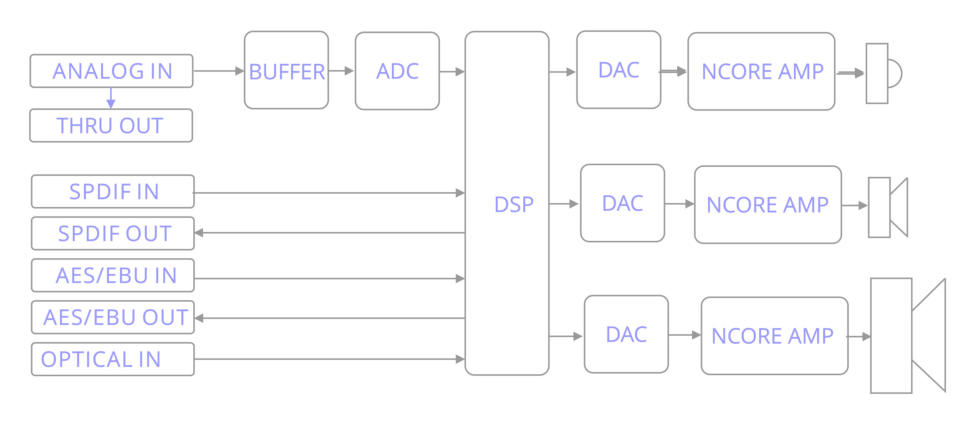
And here’s what happens as we design at the processor’s control panels. You can see the exquisite
control we have over what how the speaker functions. All without any losses.
Here is the frequency/amplitude transfer function we impose on the midrange driver of Ibis,
showing the extremely fast roll offs that limit the driver’s band to between 160Hz and 2200Hz,
with a downward slope in the midband to suppress the driver’s natural inductive rise. If you don’t
know what that means, no problem, it’s great. And, in the lower left, you’ll notice a delay of 53
microseconds to time its output correctly with respect to the tweeter.
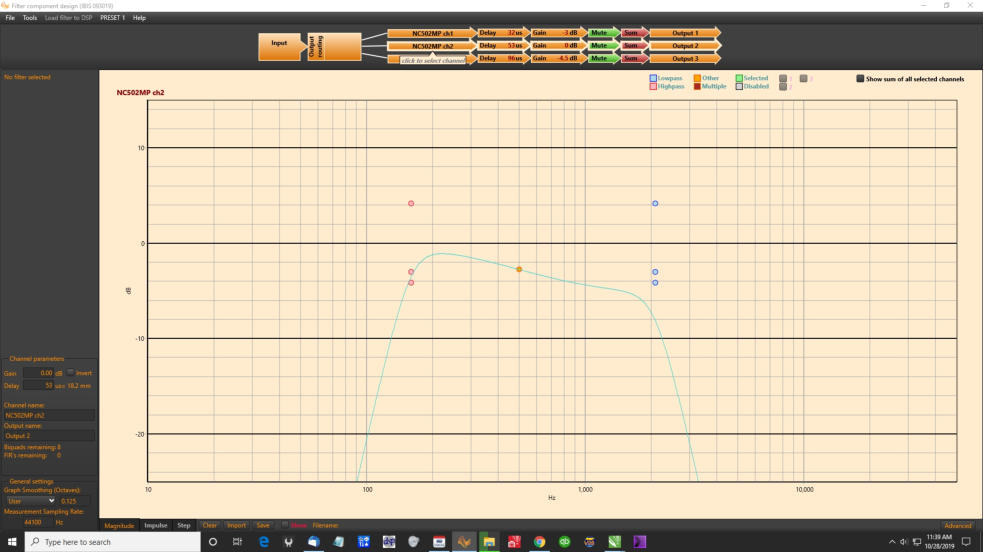

And here’s what a room equalization file might look like. Try that in analog!







DIGITAL SIGNAL PROCESSING, A QUICK TOUR
Meadowlark Audio speakers are capable of
taking digital audio directly from your source.
So, if you’re thinking of moving up to next
generation stereo, or if you’re buying your first
serious stereo, it’s a good idea to understand
the basics.
At the beginning of digital audio, when Sony
and Phillips got together to create the
standards used in Compact Disc, they
established a data format called Sony/Philllips
Digital Interface Format or S/PDIF. That’s
what’s on a CD. Like any datastream, it’s a
string of 1s and 0s that can be stored or
transmitted like any other digital file.
When CD was being developed by Sony and
Phillips, their idea was to make a 120mm
optical disc that could hold the entirety of
their longest piece of music of interest,
Beethoven’s 9th Symphony, which at the time
consumed two LPs, about 75 minutes. With
the available data densities, that allowed for a
16 bit word for both left and right channels
coming once each 1/44100th of a second, or
44.1KHz. At that data density, resolution and
dynamic range were pretty good, but not
great.
Today’s HD Audio data densities are much
higher, meaning fantastic resolution and
dynamic range. Conveniently, the format
remains the same so a modern system that
processes at 24bit / 192KHz will also process
your CD quality files.
In our speakers, the onboard Digital Signal
Processor inputs S/PDIF, AES/EBU and Toslink,
then goes to work on the datastream,
rearranging it in a number of ways to
accomplish all of the things that were once
done by analog circuits, plus much more. This
process is lossless, meaning the data are not
degraded, merely rearranged. So unlike
conventional methods, DSP avoids damaging
the music signal. Following the manipulations
that we impose in both amplitude and time
domains, the conversion to analog - DAC -
occurs directly before amplification. In a
three-way speaker we employ three distinct
channels of DSP, each feeding it’s own
dedicated amplifier by way of it’s own
dedicated DAC. This gives us complete control
over exactly what signal goes to which driver -
including control over relative timing. It also
gives complete control over how your speaker
sounds in your room.
Here is the flowchart showing how the simply
and purely the signal goes thru our speakers:
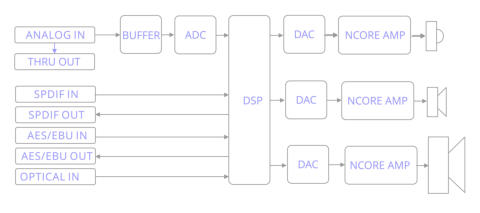
And here’s what happens as we design at the
processor’s control panels. You can see the
exquisite control we have over what how the
speaker functions. All without any losses.
Here is the frequency/amplitude transfer
function we impose on the midrange driver of
Ibis, showing the extremely fast roll offs that
limit the driver’s band to between 160Hz and
2200Hz, with a downward slope in the
midband to suppress the driver’s natural
inductive rise. If you don’t know what that
means, no problem, it’s great. And, in the
lower left, you’ll notice a delay of 53
microseconds to time its output correctly with
respect to the tweeter.
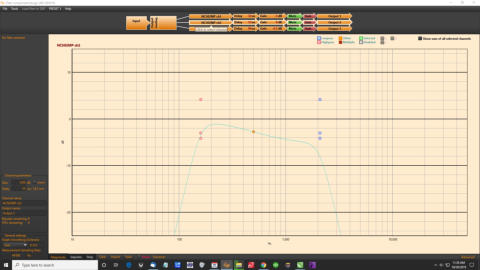
And here’s what a room equalization file
might look like. Try that in analog!
